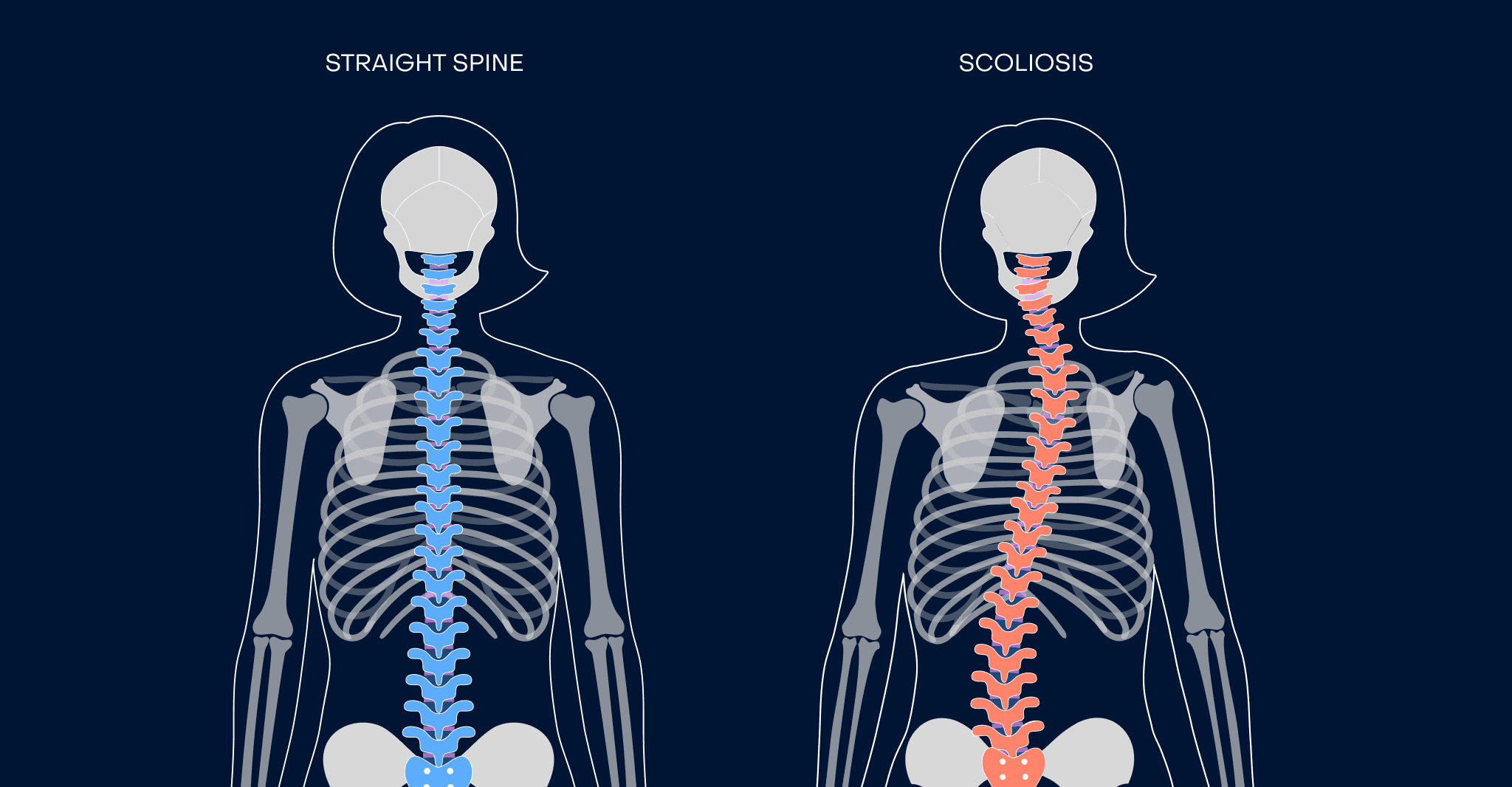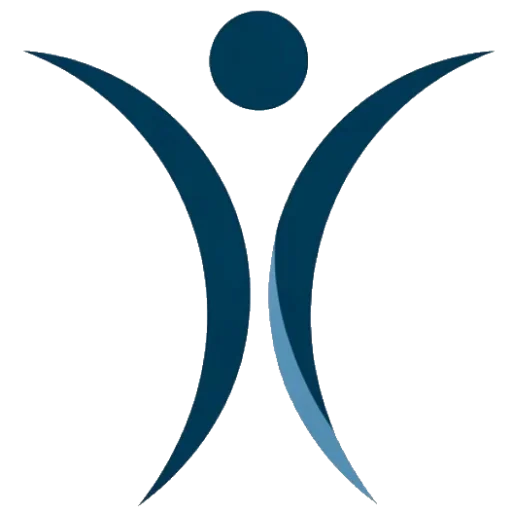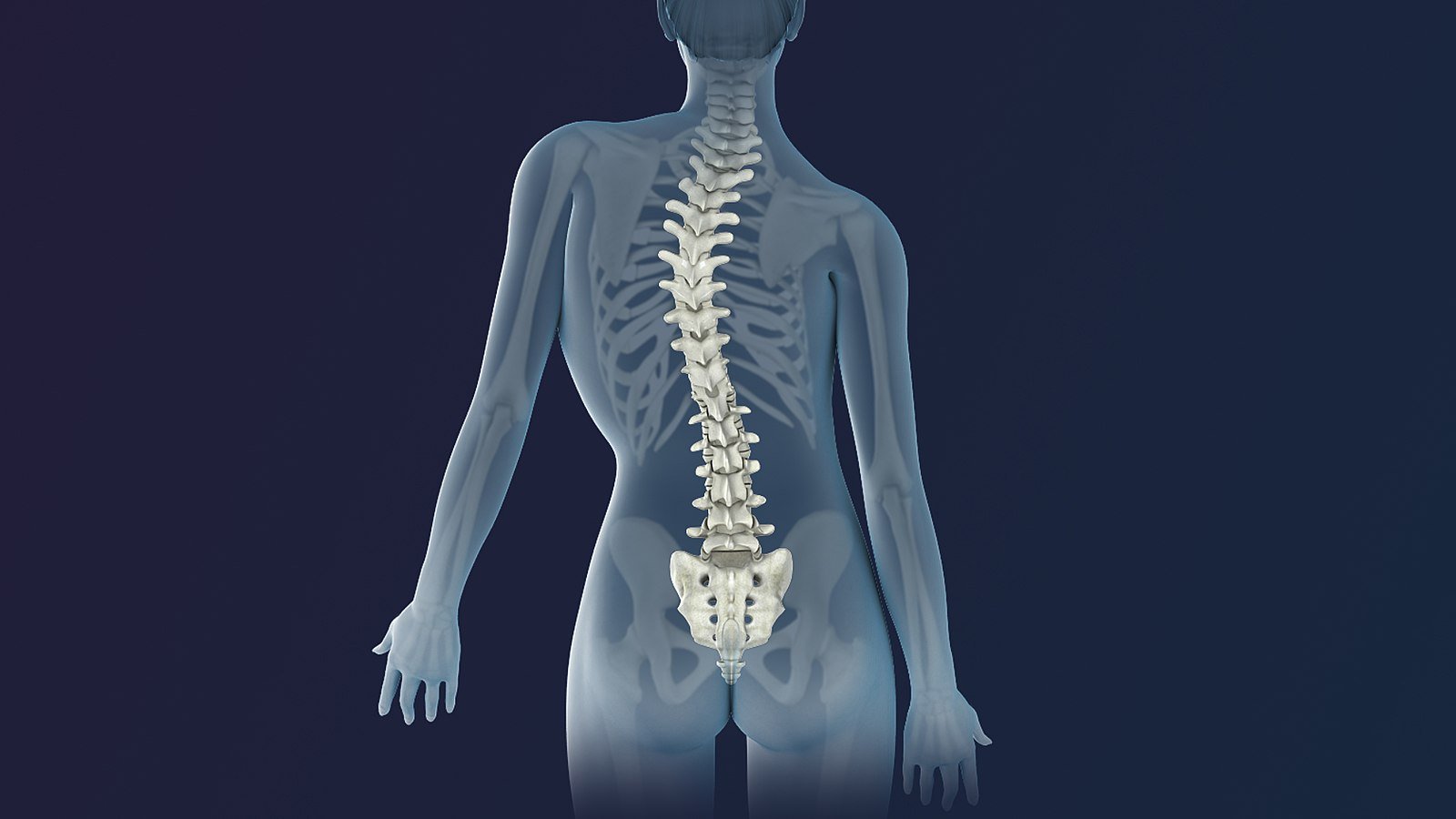When you have TMJ problems you may have difficulty doing things like eating and talking.
Scoliosis and Its Early Postural Signs
Scoliosis is a three-dimensional deviation of the spine, involving three planes: the lateral plane, the frontal plane, and the transversal plane. Scoliosis can present in the shape of a "C" or an "S." According to statistics, scoliosis is more common in girls than in boys.
Scoliosis is a health issue where the spine is curved from side to side. The spine of someone with scoliosis may resemble an "S" more than a straight line. Approximately 2% of the population has a scoliotic curvature in their spine, with around 10% of these cases being severe.
Scoliosis is named based on the area where the curvature’s apex is located in the spine. These curvatures most often occur in the thoracic (chest) region and in the area between the thoracic and lumbar (lower back) sections.
Early adolescence, especially between the ages of 11 and 14, is the ideal time to check the spine for scoliosis. Scoliosis may progress during adolescence if left untreated during this period.
Në çdo seancë fizioterapie, ne nuk trajtojmë vetëm simptomat, por punojmë për të gjetur shkakun e problemit, duke krijuar një plan të personalizuar që përshtatet me nevojat e çdo pacienti.
What are the early postural signs of scoliosis?
- One shoulder is higher than the other
- The torso appears tilted
- The pelvis is uneven
- Asymmetry of the waist
- The head tilts to one side

What can be achieved through physiotherapy?
- Prevention of the progression of the curvature degree
- Reduction of the curvature degree
- Achieving muscular balance
- Improvement of posture
- Pain reduction
- Increase in muscle strength and endurance
A study published in the journal Spine in 2016 examined the effects of physiotherapy programs on patients with scoliosis. This study analyzed data from several patients who underwent physiotherapy treatment and assessed the improvement in symptoms and physical function.
Results ::
- Pain Reduction:Patients reported a significant reduction in pain after several months of treatment. This indicates that physiotherapy can help manage the symptoms of scoliosis.
- Improvement in Mobility:Personalized exercises helped increase flexibility and strength, easing movement and daily activities.
- Posture:Lessons on posture and techniques for maintaining a straight stance contributed to the overall improvement in the patients' body alignment.
The Importance of Early Diagnosis of Scoliosis
Benefits of Early Diagnosis
- Quick Intervention:Early diagnosis allows treatment to begin sooner, which can help prevent the worsening of scoliosis. When the condition is addressed in its early stages, there is a greater chance of avoiding future complications.
- Broader Treatment Options:Patients diagnosed early have more opportunities to receive non-surgical treatments, such as physiotherapy, which can help manage symptoms and improve posture.
Recommendations for Parents and Caregivers:
- Observe for Signs:Caregivers should be aware of potential signs of scoliosis, such as uneven shoulders, tilted torso, or asymmetry in the waist. Prompt action can lead to earlier diagnosis and more effective treatment.
- Encourage Physical Activity:: Aktivitetet e rregullta fizike mund të ndihmojnë në mbajtjen e një trupi të shëndetshëm dhe ndihmojnë në menaxhimin e skoliozës.
- Consult Specialists:If you notice any changes or suspect scoliosis, consult with an orthopedic specialist or physiotherapist. They can provide guidance, conduct assessments, and create a suitable treatment plan tailored to your child’s needs. Early intervention can lead to better outcomes.


